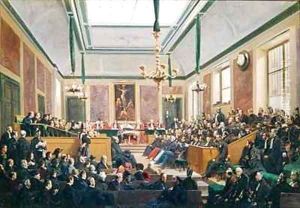Edme Adolphe Fontaine Paintings
Edme Adolphe Fontaine was a French sculptor born in 1814 in the city of Paris. His life and career were deeply intertwined with the artistic movements and political upheavals of 19th-century France, a period that saw the rise of Romanticism, followed by Realism and the beginnings of Impressionism. Fontaine, however, largely focused on sculpture, contributing to the rich tapestry of French art through his mastery of form and his exploration of classical and contemporary themes.
Fontaine's education in art was grounded in the prestigious École des Beaux-Arts in Paris, where he studied under notable sculptors of the time. This institution was central to the development of French artists in the 19th century, advocating for classical standards of beauty and technique that Fontaine would both embrace and challenge in his career. His early works were marked by a strong adherence to the neoclassical tradition, emphasizing harmonic proportions, smooth surfaces, and idealized forms drawn from ancient Greek and Roman art.
Throughout his career, Fontaine participated in the Salon, the official art exhibition of the Académie des Beaux-Arts in Paris. His submissions to the Salon helped establish his reputation, attracting the attention of both critics and the public. His sculptures often depicted mythological subjects, historical figures, and allegorical themes, showcasing his ability to imbue marble and bronze with a sense of life and emotion. Despite the dominance of painting in the French art scene, Fontaine's sculptures held their own, contributing to the vibrant cultural landscape of his time.
In addition to his mythological and allegorical works, Fontaine was also known for his public monuments and memorials, which blended the personal with the political. These works reflected the tumultuous history of France during his lifetime, including the revolutions of 1830 and 1848, the Second Empire, and the early years of the Third Republic. Through these public commissions, Fontaine engaged with contemporary events and figures, contributing to the dialogue between art and society.
Edme Adolphe Fontaine passed away in 1883, leaving behind a legacy that, while perhaps not as widely recognized as some of his contemporaries, contributed significantly to the development of French sculpture. His works remain a testament to the enduring appeal of classical forms and the creative potential of sculpture to capture the human experience. Fontaine's career reflects the broader trends and transitions in 19th-century French art, from the academic strictures of his education to the more expressive and individualistic approaches that would come to define modernism.
